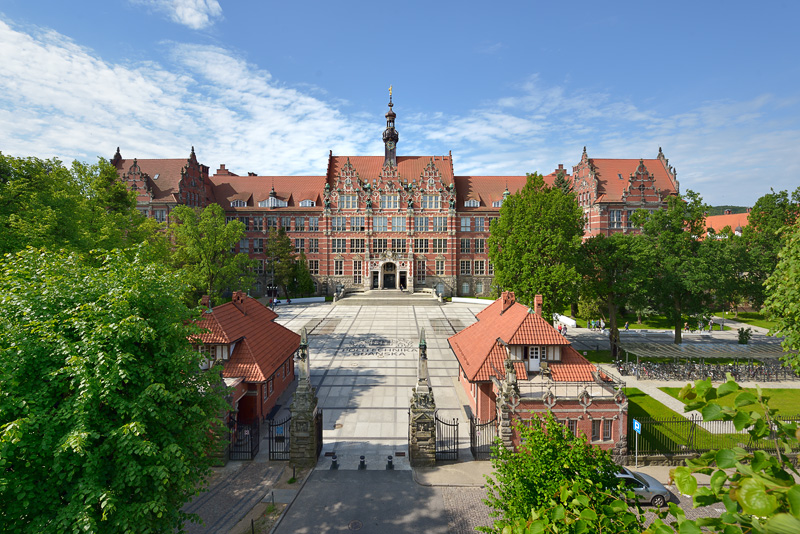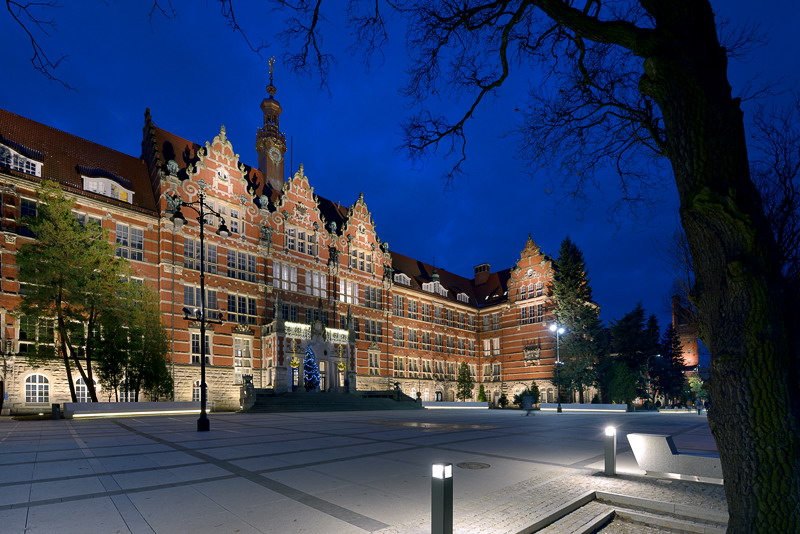The conference will be held at Gdańsk University of Technology (Gdańsk Tech), in the vicinity of the Gdańsk's Old Town quarter and the Baltic Sea shore.
 |
 |
 |
Photographs by: K. Krzempek, Gdańsk Tech
Gdańsk University of Technology was established in 1904, making it one of the oldest autonomous national universities in Poland and the oldest technical university on the Polish territory. During its first academic year, Gdańsk University of Technology hosted less than 200 students, who begun their education at 6 different faculties. Nowadays GUT is the largest technical university in the Pomeranian Region and offers Bachelor, Master and Doctoral programs in various areas of science and technology. With 9 faculties and more than 23 000 students, it reinforces its position among the best research universities in Poland certified by national rankings and international authorities.
The Main Building of the University, richly decorated with sculptures, was built in the Dutch Renaissance Revival style. Selected buildings of the University belong to the national register of historic monuments. Along with its impressive 77-hectare campus, being a harmonious combination of over a century of history and modern XXI century premises, Gdańsk University of Technology was recently ranked by Times Higher Education among ten the most beautiful universities in Europe.
A short guide to the most interesting places on the campus is available here.
About Gdańsk
Among the Best European Destinations of 2017, Gdańsk was ranked in the third place. The 837,000 summer season visitors of that year, including 289,000 foreigners, rated their stay 9.1 out of 10. Situated on the Baltic Sea coast, Gdańsk is the heart of the metropolitan area known as the Tricity, formed by Gdańsk and two neighbouring cities of Gdynia and Sopot, with the total population reaching 700,000 inhabitants.
Gdańsk is also the capital of the pomeranian voivodeship, an area where the Baltic Sea meets sprawling woods and fields, towering hills and captivating lake districts. Within this voivodeship lies Kashubia, widely believed to be one of the most beautiful regions of Poland. A number of breathtaking landmarks, such as the towns of Kartuzy and Kościerzyna, lie only a stone’s throw away from Gdańsk and are easily reachable by a train or bus.
History and Internationalisation
The city is proud of its rich history, dating all the way back to the Middle Ages. It was an important member of the Hanseatic League, a confederation of market towns dominating the Baltic trade, and has remained a prosperous economic centre ever since. It is where World War II started, but also where Solidarity, the movement directly responsible for the fall of communism in the Central and Eastern Europe, was created. The European Solidarity Center both documents the history and heritage of the Solidarity and promotes the ideas of democracy and freedom.
From its inception, Gdańsk has remained a truly multicultural city. The authorities estimate that Gdańsk is a home for circa 20,000 foreigners, including 2,000 international students. It is also a vibrant centre of technological innovation. Numerous global corporations can be found in the area, recruiting well-educated graduates of local higher education institutions for their workforce. 150,000 enterprises and corporations, 3,000 foreign investors and 30 leading international companies operate in the city itself.
Transport and Climate
Contemporary Tricity ranks among the ten safest and most tolerant cities in Poland. It can be conveniently reached via the international Gdansk Lech Walesa Airport, located only 12 km from the city centre and connected to the city by the public transport nework. There is a wide selection of bus, train, ferry, and flight connections with other major cities in Poland and abroad. A well-developed network of public transport makes it easy to travel also within the Tricity itself.
The air of Tricity is smog-free and, for such a vast metropolitan area, relatively unpolluted. Gdańsk has an oceanic climate, with moderate winters, when the temperature falls near or below 0°C, and mild summers, although in July and August it can get as hot as 30–35°C. At this time of the year, both inhabitants and tourists visit the beautiful city beaches, the closest one lying only about 6 km away from the campus of Gdańsk University of Technology.
